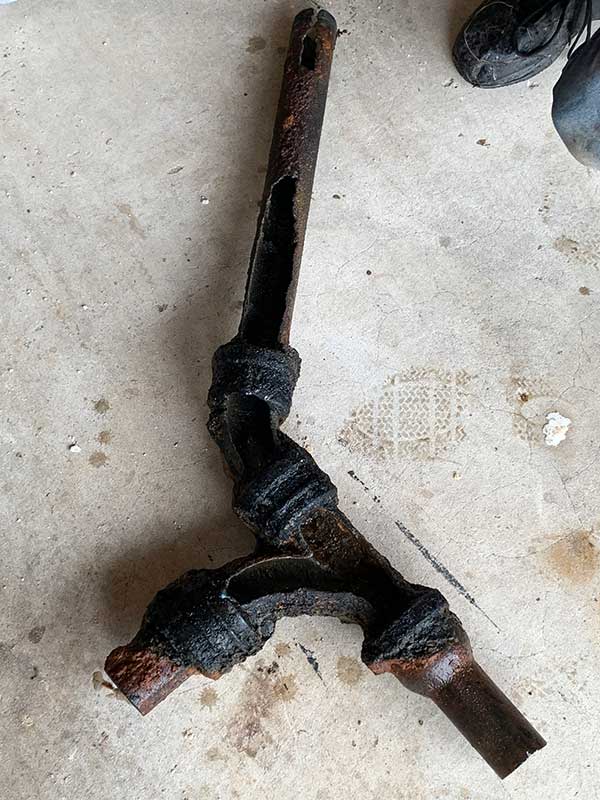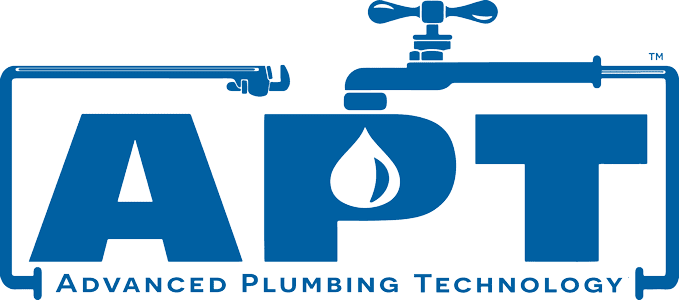Signs of a Failing Cast Iron System
If your home was built before 1975 your cast iron pipes are close to 50 years old or older. Given that cast-iron pipes are only expected to last approximately 50 years, your plumbing could be at the end of its life expectancy. Cast iron was meant to last between 50-100 years, it can withstand high pressure, and it will not melt or burn. Cast iron was the gold standard for pipes in the early 20th century. However, despite its dependability, structures built in the 1940s or 1950s are reaching the end of their lifespan.
One sign that there is a problem with your cast iron plumbing system is a gurgling sound from your toilets/sinks or the smell of sewer gas. The smell of sewer gas is a sign that there is a broken pipe. The broken pipe is releasing gases into the air that would normally be vented to the outdoors, and these gases are not healthy to have in your home.
Other signs that there is an issue with your old plumbing are: roach/pest infestation (including rats), warped wood floors, water-stained tiles or grout, or water damage to your carpet. If you are experiencing any of these warning signs, your plumbing system is likely failing.
This can create serious problems and potential health hazards for a typical family if these repairs are not completed in a timely manner. With symptoms of the problem including the high potential for mold growth, it is important that you have your cast iron pipes inspected. Fortunately, APT offers FREE cast iron pipe inspections that include video inspection so that you can see what your pipes look like that run underneath your home.
Residential Pipeliner
Over the years, corrosion and rust can form and build up in your cast iron water lines and drain pipe, resulting in cracks, leaks, water flow issues, and creating holes large enough for tree roots to sneak in. This is especially true in older homes. The signs of a plumbing issue include low water pressure, slow draining, odors, water damage to your floors, and possibly pest infestation.
Sadly, pipes can go bad without much warning leaving you with a mess and a smaller bank balance than you had before. The traditional method of sewer replacement has been known to be very disruptive and noisy to you and your neighbors. When plumbing and pipe issues occur, calling a plumber is the first thing you should do.
An expert technician will come to your home and likely perform a camera inspection, which is exactly what it sounds like. A small camera will be fed into the pipeline where the technician will look for broken pipes, root intrusion, corrosion, or any debris that may be compromising the structural integrity of your plumbing.
We suggest one of two methods for repairing your old pipes. Either through pipe replacement or the repair of the existing pipe. Pipe replacement is the more expensive of the options and would consist of:
- locate the cracked or damaged pipe
- remove everything from the structure that blocks access to the pipe
- replace the old with the new
- rebuild everything that you removed gaining access to the pipe
Repairing pipes through trenchless pipe repair methods is a far less expensive method to get brand new pipes. without all the damage to your home and property.
Free Video Inspection
If your home was built before 1975 we offer a free video inspection, so you can see the current state of your cast iron system.
Residential Sewer Lines
 When considering the sewer pipes coming to and from your home or commercial property, you need to know the difference between the upper lateral and lower lateral. The upper lateral is part of the sewer line that belongs to the home or other commercial building. The lower lateral is the part that connects to the main sewer in the street. It's normally assumed that the city is responsible for that part, but that would be incorrect.
When considering the sewer pipes coming to and from your home or commercial property, you need to know the difference between the upper lateral and lower lateral. The upper lateral is part of the sewer line that belongs to the home or other commercial building. The lower lateral is the part that connects to the main sewer in the street. It's normally assumed that the city is responsible for that part, but that would be incorrect.
The property owner is usually liable for repairs to both the upper and lower lateral. However, this varies across the United States. The good news is that what was once a very expensive and destructive process has come a long way. The latest technology is referred to often as trenchless pipe repair.
Trenchless technology has produced a new way to take care of sewer drain or main line repair with a method called Cured In Place Pipe or CIPP. This method uses a special epoxy resin, which enables a “pipe within the existing pipe” to be created. This new technology offers the same strength as new pipe.
Why Choose Us?
The team of expert plumbers in our plumbing division, includes multiple plumbing contractors, licensed plumber, master plumbers, journeymen and other expert technicians using the latest equipment. Our team has many years of experience and offers the highest quality of service in the industry.
We are the top choice for customer service and customer satisfaction. Each project is overseen and reviewed by a licensed plumbing contractor and each job is performed to the plumbing code in the state of Florida.
Free Video Inspection
If your home was built before 1975 we offer a free video inspection, so you can see the current state of your cast iron system.
See What Our Residential Clients Say About Us

Deb HenryThe team showed up a bit early. We had lost power and they graciously offered use of their generator. They protected the flooring worked steadily and cleaned up each day.

Carlene ReddickAPT company was pleasant to work with. They were very accessible and stay in contact with us to follow up on the processes that needed to proceed forward on the project. We worked very closely with Tony Diana and he was well knowledgeable and very informative. He did not hesitate to answer our questions and did make us feel comfortable in making all of our decisions. I would definitely recommend Applied Technology plumbing and would most likely use them in the future for our plumbing projects.

Lisa MarieI’m so thankful for Brett, Tony & all the hard workers at APT. They did everything in their power to meet our needs. They went over & beyond. Everything is working so much better. God bless and Jesus loves you!

Samuel RosarioThis company is:very professional and has a great team of people who have experience in what they do and it shows. This it the first time I used them for this job pipe lining.It is new to me but I trusted them.
GREAT JOB AND THANKS ALOT FOR YOUR SERVICE

Ginny WalkerAPT did slip lining on all our cast iron sewer pipes. We were completely satisfied with the work that was performed. Hannah, the foreman on the job was very professional and conscious. She took pride in her work and her crew. The crew did a fabulous job, cleaned up each night and were very polite and respectful. Everything was explained to us during the process. They said it would be a two day job and they were right on target. I would definitely recommend this team.

Jacob TanisTony has been great dealing with my issue I have been having. He is a very professional personable person.

Paula DuncanI would like to give a huge shout out to Tony D. and his team at APT, Advanced Plumbing Technology! He and his team of professionals, came to my home and without judgment, assessed The water damage to my home due to faulty cast-iron pipes. His team did not miss a beat by checking every square footage of Pipes, on the roof, within the walls, bathroom room, kitchen, and laundry room. During the process Tony sat down with me at my kitchen table and explained how it all would work. It was a bit overwhelming but he put me at ease. Highly recommend this company for your future pipe needs and plumbing repairs, assessment of damage. 😊

Ayana SmithI worked with APT regarding a repipe matter. Due to my work schedule, it was difficult for me to meet with them so they actually came to my office and explained what the job would entail. When they came to my home, they were very detailed, prompt, professional and made the entire process as stress free as possible. I am thankful for their services and highly recommend them should you need a repiping service.

Alexander DeveneyAPT was extremely professional. They have an abundance of knowledge and were able to diagnose my issues in a timely manner. My representative Brett was able to assist and guide me through the process. APT is one of the main reasons I was able to win my case against my home owners insurance. I couldn’t be more pleased with their staff and representatives. 10/10 would recommend to anyone in need.

NessaAPT had to come to my house to do an inspection. They were here for 2 1/2 hours, were very thorough, and did an excellent job! They were very kind and I was very impressed. Great job APT!! Thank you 🙂

Desiree MontagnaAPT made the process super easy. I needed to get my supply line and drain pipes fixed. They made me feel at ease with such a big job. They kept me in the loop at every step. Through paper work, scheduling, permits, during the job, going over final paperwork with me, they made sure I understood the process. They took a stressful process and made it manageable.
The plumbing has never worked better. We noticed a difference the first time we used it. Our shower always backed up. The first time we used the shower after the job it was draining the correct way. Everything the touched had amazing results.

Sunkissed ChocolateThe representative that was sent to my home, I believe his name was Tony and also a gentleman name David, were so helpful during my plumbing crisis. They were very knowledgeable about the work and repairs that were required to make my house a home again.
